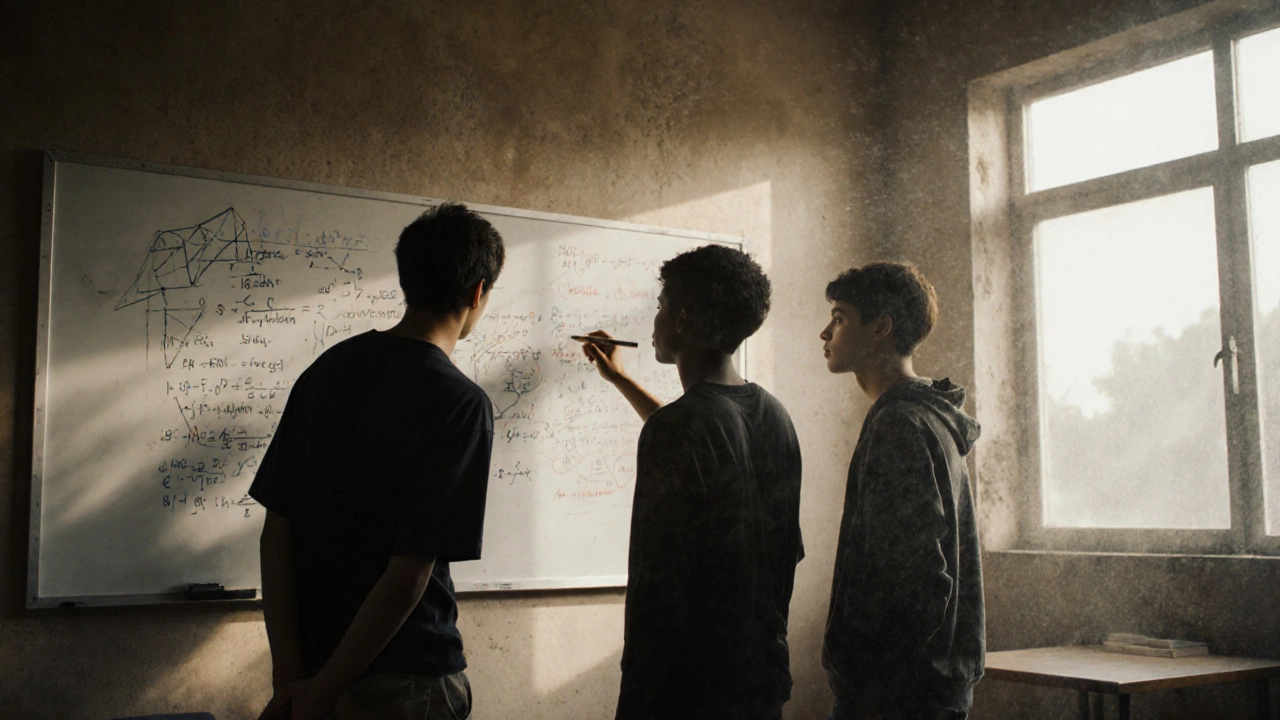USAMO Qualification Calculator
When people ask what the hardest class in America is, they’re usually thinking of something like organic chemistry, medical school, or law school. But none of those come close to the real answer: the USAMO - the United States of America Mathematical Olympiad. It’s not a class you sign up for at school. It’s not even a course you take. It’s a six-hour, six-problem exam that only 500 high school students in the entire country qualify to take. And for those who do, it’s the most brutal intellectual challenge they’ll ever face before college.
What Exactly Is the USAMO?
The USAMO is the final round of the American Mathematics Competitions series, run by the Mathematical Association of America. To get there, students must first pass the AMC 10 or AMC 12 - multiple-choice tests taken by over 300,000 students annually. Only the top 2.5% make it to the AIME (American Invitational Mathematics Examination). From there, roughly 500 students are invited to the USAMO based on their combined AMC and AIME scores.
The USAMO isn’t about memorizing formulas. It’s not about speed. It’s about solving problems that don’t have obvious paths. Each problem requires deep insight, creative thinking, and the ability to construct a flawless proof from scratch. You can’t guess your way through. You can’t use a calculator. You have to write every step, every logical leap, perfectly.
Why It’s Harder Than Anything in College
Let’s compare it to something people assume is hard - a college calculus class. In college, you’re given problems that test your understanding of a concept you’ve practiced dozens of times. The USAMO gives you problems that no textbook has ever seen. The questions are designed by mathematicians to break the best students in the country. They’re inspired by research-level math, not classroom material.
For example, a typical USAMO problem might ask: Prove that for any positive integer n, there exists a multiple of n whose decimal representation contains only the digits 0 and 1. There’s no formula for this. No algorithm. You have to invent a structure - maybe using modular arithmetic, pigeonhole principle, or recursive construction - and prove it works for all cases. One wrong assumption, one skipped step, and the entire proof collapses.
Students who ace AP Calculus BC often fail the first USAMO problem. Why? Because school math rewards efficiency. USAMO rewards originality.
The Time Commitment Is Unrealistic
Most USAMO qualifiers spend 15 to 25 hours a week training for years before they even sit for the exam. They don’t just do homework - they devour problem books like The Art and Craft of Problem Solving by Paul Zeitz, work through past IMO papers, and join online forums where they argue over solutions with other top students across the country.
Some train with coaches who were themselves USAMO winners. Others join summer programs like MathPath or Ross Mathematics Program, where they spend six weeks living and breathing math 10 hours a day. These aren’t enrichment programs. They’re boot camps. And they’re not optional if you want to score above zero on the USAMO.
One student from Texas told me he missed his high school prom because he was preparing for the USAMO. Another from California skipped his senior year field trip to stay home and solve 100 geometry problems. These aren’t outliers. They’re the norm.

The Scoring Is Ruthless
The USAMO is scored out of 42 points - 7 points per problem. But don’t be fooled. A score of 10 is considered excellent. A score of 20 puts you in the top 10. A perfect 42 has happened fewer than 15 times in the last 30 years. Most students score between 0 and 5.
Here’s the kicker: you don’t get partial credit for getting close. If your proof misses one key insight - say, failing to show that a certain sequence is periodic - you get zero for that problem, even if the rest is flawless. The graders are former IMO medalists. They’ve seen every trick. They know exactly where you’re lying to yourself.
It’s not like a college midterm where you can write a paragraph and get 3/10 for effort. In the USAMO, effort means nothing. Only correctness matters.
Who Wins? And Why It Matters
The top 12 scorers on the USAMO are invited to the Mathematical Olympiad Summer Program (MOSP). From there, six are chosen to represent the U.S. at the International Mathematical Olympiad (IMO). These students don’t just get scholarships - they get full rides to MIT, Stanford, Princeton. They’re recruited by top tech firms before they graduate high school.
But winning isn’t about the prize. It’s about what the exam reveals. The USAMO doesn’t test how much you know. It tests how well you think under pressure, how stubbornly you pursue an idea, how deeply you understand structure and pattern. It’s the closest thing to real mathematical research that a teenager can experience.
Many USAMO winners go on to become professors, cryptographers, AI researchers. One winner, Terence Tao, became a Fields Medalist - the highest honor in mathematics. He started competing at age 10.

Is It Worth It?
Some say the USAMO is too extreme. That it turns kids into stress cases. That it favors those with rich parents who can afford coaches and camps. There’s truth to that. Access isn’t equal. But the exam itself? It’s pure. It doesn’t care where you live, what school you go to, or how much money your family has. It only cares if you can solve the problem.
If you’re the kind of person who gets obsessed with puzzles, who can sit for hours staring at a blank page until something clicks - then the USAMO isn’t the hardest class in America. It’s the only one that truly matters.
What Comes After the USAMO?
For those who make it past the USAMO, the path doesn’t end. The next step is the IMO, where students from over 100 countries compete. The problems there are even harder. The competition is global. The stakes are higher.
But even if you don’t make the team, the skills you build - patience, precision, resilience - last a lifetime. The ability to sit with uncertainty, to break down the impossible into steps, to keep going when you’re stuck? That’s not just useful for math. It’s useful for life.
Is the USAMO harder than the SAT or ACT?
Yes, by a massive margin. The SAT and ACT test your ability to follow instructions and apply standard formulas under time pressure. The USAMO tests your ability to invent new mathematics on the spot. One is a standardized test. The other is a proving ground for future mathematicians.
Can you prepare for the USAMO without a coach?
Yes, but it’s extremely difficult. Top scorers almost always have mentorship. That said, free resources like the Art of Problem Solving website, past USAMO problems, and online forums like Math Stack Exchange can get you far. The key is consistent, deliberate practice - not just solving problems, but studying solutions like you’re learning a language.
Do colleges care about USAMO scores?
Absolutely. MIT, Caltech, Stanford, and Princeton actively recruit USAMO qualifiers. A high score signals exceptional problem-solving ability - a trait these schools value more than perfect GPAs. Many applicants with USAMO honors are admitted with no other extracurriculars.
Is the USAMO only for math geniuses?
No. Many winners weren’t the top students in their math class. They were the ones who practiced the most. It’s not about raw talent. It’s about obsession. The students who win are the ones who spent 1,000 hours solving problems nobody else wanted to touch.
What’s the difference between USAMO and IMO?
The USAMO is a national competition for U.S. students. The IMO is the global championship. IMO problems are slightly harder and require more advanced techniques - often drawn from number theory, combinatorics, and geometry at a graduate level. Only the top 6 USAMO scorers get to compete in the IMO.
Final Thought: The Real Hardest Class
There’s no syllabus for the USAMO. No professor grading your attendance. No textbook that teaches you how to win. It’s a self-made challenge, built by students who refuse to accept that some things are too hard to solve. And that’s why it’s the hardest class in America - not because it’s complex, but because it demands everything you have, and then asks for more.
